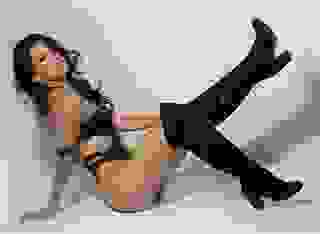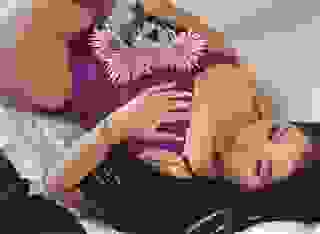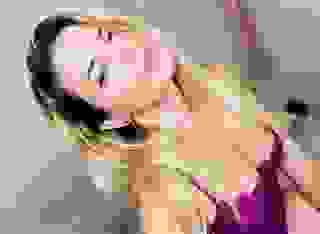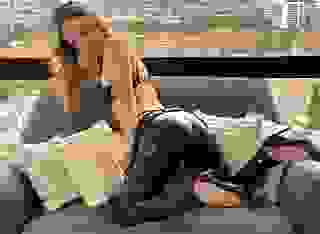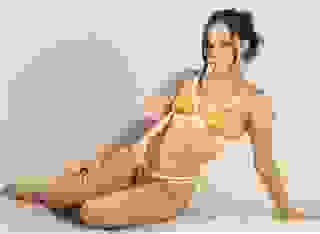- How To
- Show or Tell
Note: You can change font size, font face, and turn on dark mode by clicking the "A" icon tab in the Story Info Box.
You can temporarily switch back to a Classic Literotica® experience during our ongoing public Beta testing. Please consider leaving feedback on issues you experience or suggest improvements.
Click hereWith profuse and grateful thanks to ALEX756, KILLERMUFFIN, PERDITA, JFINN, WILDSWEETONE, WICKED-N-EROTIC, OCTAVIAN, THE EARL, QUASIMODEM, OPENTHIGHS_SARAH, CHAMPAGNE1982 and QUITE COOL.
If you've ever asked for advice or a critique from a writer, on Lit. or anywhere else, then you will have more than likely been offered the phrase "Show don't tell". But Just what do they mean by this? Ask Alex756 and she'll quibble about there being no difference between when a writer tells the reader something and when showing something. It's all telling.
Ok so what do we mean when we say "Show don't tell". What I mean by it is, a list of bare facts is dull. If I'm reading a story on Lit. and I come to a paragraph of measurements, Height, weight, bra size and dick length/girth then I'll skip over it and maybe skip the rest of the story too.
On the other hand if I'm given an illustration of these attributes then I'm being treated like a 'reader' rather than a 'looker'. So maybe the phrase should be "Illustrate don't tell".
Let's take the sentence:
"She was five feet six inches with blonde hair and he was six feet two with broad shoulders and big hands."
That's what I would call telling, I'd also call it very dull. To illustrate these bare facts a single sentence might go:
"Standing silently, her dyed hair swaying and tickling the backs of his pianist fingers, his arm draped carelessly across her shoulders, she snuggled into his side and glancing upwards noted the fact that she could see right up his nose."
Here I've managed to convey facts in the first sentence by suggesting them in the second. You can also see that some sort of intimacy is apparent between the two and that the girl is rather frivolous.
KILLERMUFFIN offers the following re-working of the facts and easily manages to create a scene of distinct interest, introducing a further character and some considerable pain whilst retaining each pertinent fact.
"Sarah screeched when he pushed her legs apart and knelt between them. Sweat had turned her blonde hair into strings of dishwater that clung to her face. Men that big had no freaking business shoving a girl's legs apart. Even though the stirrups kept her spread open, his shoulders still touched her thighs. She was comfortably medium-sized, but he made her feel like a dwarf.
He smiled at her and then stuck his lubed fingers into her pussy. She gritted her teeth while he prodded around with an expression usually reserved for groping blindly under the sofa for lost keys.
"You know what they say about a man's hands," Donna said, then leered at him.
She was too startled to scream when the contraction crunched his knuckles."
When you read stories on Lit. you will find many written in the style of:
"He was five feet eleven and had muscles like a film star with dark brown eyes and darker brown longish hair. Then he saw her and she was like an angel with a body to match. Her hair was golden and she was exactly the same height as he was. He could tell that she was hot for him because her nipples were poking out beneath her green top."
Again we are given a dull list of facts. How can we change this to make it, not more literary but, more interesting? One thing that can be done is avoiding lists. If you feel the need to "tell" some things that are factual then spread them throughout the work. Dribble them sparingly and let the reader's imagination soak them up piece-meal. Find another phrase for a bare fact. Another way to attack this problem is change your viewpoint and start again as PERDITA does:
"I had to tell myself I wasn't in Hollywood, but the young Day-Lewis look-alike meeting me eye-to-eye at the bar during the first intermission of Lohengrin was a real 'looker', as Mom used to say. I caught his liquid doe-eyes skimming over my breasts and hoped he had an inkling as to why my nipples were stiff and jutting out from behind my lime cashmere halter. I could feel my full breasts swell warmly as our eyes met for an instant and hoped he caught that too.
He had shoulder-length dark brownish hair, so I hoped he didn't hold too fast with the stereotypes about blondes. I'm a natural via mostly Swedish genes. I may be a ballet dancer but I think on my feet and am almost finished with Wittgenstein's On Certainty."
The factual statement about the brown shoulder-length hair is used as a contrast to the reference about the anecdotal dimness of blondes.
Going back to the original viewpoint ALEX756 gives us:
"He grabbed a shirt out of his bike's saddle bag and pulled it on, trying not to smile as some cute thing at the pay phone paused in her inane conversation to look at his muscles. His brown eyes and brown hair reflected for a moment in the door as he opened it. He didn't see the blonde angel until he was staring straight into her blue eyes. Then he noticed the cherry slurpee running down her green top -- a small bit of slush caught on a nipple."
The original "muscles like a film star" become attractiveness to "some cute thing"
JFINN next concentrating on illustrating the facts:
"He liked that he could look directly in her eyes. It had happened before, he wasn't tall; barely over average height, but it always gave him a thrill when a woman stood his equal. It was all they had in common, but he liked that too. In fact, he liked everything about her. She was day to his night, sunlight hair and eyes like a summer sky. Even the soft lines of her body were the perfect counterpoint to his hardened muscles.
She liked what she saw too. It was in the way she stood, her arousal showing through a shirt the color of freshly cut grass. Her eyes asked permission as her hand lifted, ready to stroke the shadowy curls at his neck. He whispered, "Yes."
The "dark brown, longish hair" is suggested rather than drawn by "shadowy curls at his neck"
Take the scene into a clothes shop and you have a much-used mirror. WILDSWEETONE takes the mirror and instead of using it so the characters can describe themselves, employs it to introduce the pair to each other.
'The T-shirt with its folded short sleeves and trapped cigarette packet fit his body like a glove. Instantly she was aroused, her body humming sensuously, her nipples beneath the green top aroused in exquisite pain. They stared at the shared mirror, a contrast of colours.
Gold hair topped an angelic body that swayed under the green suit as she tried it on. Turning in the mirror, he tugged his new jeans, then wiggled his backside further into them. She gasped at his thin plaited tail of hair as it swung against shoulders strengthened by years of manual labour, her long fingers itching to hold and tug it.
With eyes meeting, both instinctively ducked as the fault in the cheap shop mirror blinded their visibility. Grinning, they turned toward each other and she watched his own arousal as his brown eyes darkened.'
WICKED-N-EROTIC Takes every single detail and gives it a twist, finds a simile, a synonym, a description, an illustration or a new concept:
"His well chiselled body was no doubt the product of many hours spent at the gym. His hair the color of rich chocolate lay in waves around his broad shoulders, and those eyes, eyes like puddles of muddy water that held her in a trance as he approached. She stood across the room wearing an olive tone top that accentuated her voluptuous curves nicely. The sheerness of the top did little to hide her arousal as they stood eye to eye.
Her sun-kissed curls had been what caught his attention as she tossed her head back, laughing heartily with a friend. It was at that moment that he knew he had died and gone to heaven. Now standing in front of her he was wondering where she was hiding her wings."
All the examples so far (with the exception of PERDITA) kept with the third person, almost everyone used the "eyes level" to indicate same height and only half kept the non-factual angel reference. However each and every re-write was personal to that writer. Telling is a very impersonal thing. Showing (or illustrating) lets you know something about the author.
Now follows a contrived method of sticking to facts OCTAVIAN:
"He was leaning on the wall at the health centre when she walked in. She couldn't help but notice the top of his head was level with the 5ft 11inches mark.
Her eyes never left his face as she walked towards him. She didn't see the black pad on the floor and she was oblivious to the flashing red light showing that she weighed 128lbs."
He didn't have the strength to finish.
THE EARL takes the facts and hiding them skilfully still conveys each one in an everyday setting and a fashion to which many men can relate closely:
"Paul completed his length of the pool and swept his dark hair away from his eyes. He lounged back against the side, his arms resting on the edge. He loved coming here; it gave him a perfect opportunity to show off his toned body. He scanned his eyes over the pool, searching for anybody who might deserve his attention.
"Mmm," he murmured to himself as he caught the eye of a particularly fine specimen. She was staring back at him, obviously entranced by his superlative looks. Paul's eyes dropped to her impressive cleavage, encased in a minimalist green bikini and smiled as he noticed her peanut smuggling credentials. She wanted him.
Paul watched as she languidly swam towards him, her flaxen hair washing around her head, his eyes watching her breasts move. She reached the side and lowered her feet to the bottom of the pool so she was standing eye to eye with him. Paul allowed himself a final glance at her erect nipples and waited for her to open the conversation.
"Will you stop staring at my tits?" She spoke loudly, deliberately attracting everyone's attention. "Jesus, it's bad enough having to do my morning swim in this ice-cold swimming pool without having some sleazy short-arse ogle me constantly."
ALEX756 makes the valid point: "Nothing wrong with telling. Its all story telling."
QUASIMODEM points out: "Some things can't be shown."
"How do you show that a girl has red hair?
You COULD employ the following dialogue:
"Hey, Red!"
"It's auburn, damn it! Auburn."
Both times you have (different characters) "tell" her hair colour, but through the dialogue, you have "shown" the reader that she is sensitive about her hair being red.
Actually, the only way to "show" hair colour would be with an illustration."
WILDSWEETONE reminds us that we are using words:
"so what's wrong with using an illustration?
- a head of fire
- a crown of blood"
An example now of dialogue showing instead of telling by OPENTHIGHS_SARAH:
"Hey, check out movie-star guy over at the bar. He's got his eye on you."
"The little one?"
She sighed. "Your standards are questionable. He ain't that little, Sarah. Nice muscles, too."
"He's probably my height. And he needs a haircut." I yawned and looked away.
"You're like, what, five-eleven? You're a freak of nature."
"I'm statuesque. I can't be looking down at a guy unless he's, you know, licking my--"
"Yeah, I know. You've told me. Anyway, your little friends say otherwise. You could cut diamonds with those things."
"This is a medical condition, Daria. I've explained it to you before." I finished my drink and quietly told my nipples to shut up.
"Besides," Daria pointed out, "you didn't even mention your blond hair. So you ruined everything, Sarah. Gauche will think it's pathetic. And you're way over the maximum word count. Just because it was almost all dialogue doesn't mean you get to ignore all the rules."
"Fuck off, Daria. You're not even real. You're not even a goddamn story character. This is just an exercise, for God's sake."
She sobbed quietly.
"Oh, god, I'm sorry. I said I'm sorry." I took her in my arms and gave her a hug.
She smiled up at me. "Wanna make out?" she asked.
I shrugged. "Sure."
This could be called "showing whilst telling". We are eavesdropping on a conversation which contains the relevant details of the original list but also conveyed to us is a scene involving peoples thoughts about the elements of the list. Surrealism invades as the two reveal that they realise they are written characters and can even comment on their own creation.
Now KILLERMUFFIN introduces us to an otherwise invisible 'character' (who is in essence the author): The Narrator.
"When the narrator "tells" something, e.g., "she was angry," we call this "telling" because the narrator--not the character (even in the I POV)--is "telling" the reader what she was. She was angry. "Showing" is different. The narrator is still speaking (that never changes), but the narrator isn't telling the reader what she was, the narrator is illustrating what she was and reader must draw the conclusion on his or her own.
He didn't think it was all that bad, but she turned a curious shade of red before going all Linda Blair from the Exorcist on him. He ducked just in time to miss the VW Bug-sized rock she threw at his head.
The narrator is describing the character, what she did, how she looked, perhaps what she sounded like, but the narrator doesn't tell you what she is. They both accomplish the same thing; they both explain to the reader that she was angry. The difference is that telling the reader is passive and showing the reader is interactive.
Why the big deal? Why is showing better than telling if they accomplish the same thing? Passivity v. interactivity. The reader isn't just along for the ride, the reader also wants to feel a part of the story. When you tell the story, the reader cannot think for himself because there's nothing to infer, nothing to think about. The writer is supplying all of the information. When you show the story, the reader has to use his imagination. He has to think about what's happening and interact with the story. If you "tell" the story, you'll bore your reader because there is no imagination or thinking involved in telling.
CHAMPAGNE1982 in a note to ALEX756 writes:
You're right Alex! They [showing and telling] do seem to relate closely to each other -- different sides of the same coin -- In the spirit of it though, do pretend you'd like to play the same game as every one else and show us those shimmering pale tresses as they blew against the dark wool of his gabardine.
When she turns to smile we would like you to draw us a word picture that explains how his warm, earthtoned eyes reflected her cool sky coloured ones as she met him, toe to toe, nose to nose and eye to eye.
Illustrate, for your avid public, with your skilled use of the language, how his swarthy, Gallic good looks contrasted with her statuesque, Swedish ones. It's certain your readers would like to see the movement of his strength, rippling under his skin, as he swung her into his arms and how she'd shiver deliciously in response, goosebumps raising all over her body and tightening her skin, even under the chenille of her grass coloured sweater.
Or, you could tell us -- "He was five feet eleven and had muscles like a film star with dark brown eyes and darker brown longish hair. Then he saw her and she was like an angel with a body to match. Her hair was golden and she was exactly the same height as he was. He could tell that she was hot for him because her nipples were poking out beneath her green top."
Now we come to a moot point. What can we show? What can we tell? Is saying "almost touching the door frame" instead of "He was 6 foot 3. " showing rather than telling? Ask Alex756 and she will beg to differ with KILLERMUFFIN. If you ask QUITE_COOL you may get this answer:
"The difference between showing and telling in most cases deals with situations where the words can't create an image. "She was angry." Angry is a feeling, not something that can be seen. Here it becomes necessary to show anger. Add detail to the situation, something the reader can see."
For a technical aspect and reasons both for and against QUASIMODEM:
"OPENTHIGHS_SARAH's humorous example told us all the facts that were to be part of the STORY.
Her character Daria demonstrated (showed) that she was self-involved and shallow, in the SUBTEXT.
Tell = factual information = STORY
Show = reader's impression = SUBTEXT.
One of the reasons that showing is so difficult, is you can never be certain that your impressions are demonstrated clearly enough, nor that your reader is reading closely enough, or even intelligently enough to pick up the details from the subtext.
The more your story depends upon that sort of communication - whether bad writing, or bad reading - the more likely your story is going to be misunderstood, or deemed 'pointless.'
When you DO pull it off, and it meets a thoughtful reader, the story is much improved from stories that do not attempt this effect.
On the point of what you can show and what you can tell OPENTHIGHS_SARAH's view:
"Describing physical or other objective attributes in a clever way might be preferable simply because it makes a story more interesting. That's a matter of style and taste, not showing vs. telling."
Then goes on to echo QUITECOOL and KILLERMUFFIN:
"Describing subjective attributes is more complicated. "Showing" that a character is funny, clever, intelligent, boring, vain, silly or sexy is very different from telling the reader such a thing. These attributes aren't apparent in real life -- they have to be discovered, through dialogue or actions. Same with a character in a story. The narrator provides the reader's eyes, not her brain or her judgement."
So let us not take just visuals then let's have a look at how to "show" intend of "tell" emotions and/or states of mind for some, a purer application of showing not telling. Therefore we'll take an emotionally loaded text and try to show instead of tell:
"He admitted he'd fucked her friend "for a laugh" and that got her really mad. She thought he wanted to date her, not her best friend. Now she was worried about her friend because she thought she was in love with him, but now he says he doesn't care. She began to cry and he shrugged and walked away."
Containing all the emotions and the situation QUASIMODEM places the scene in school:
"Hey, don't tear my head off," Carson objected. "Jake bet me ten bucks. I can't refuse a bet!"
"So, you slept with Jan for a bet," Nancy stated, in a choked voice.
Jan's cheerful countenance, searching for a perfect dress for the Senior Prom, passed through Nancy's memory before she turned, sobbing, to run away."
The anger, the confusion, the worry, the tenderness, the indifference and the sorrow all contained in three sentences without using the actual words once, whilst at the same time giving a setting, characters and events.
With no more gainsaying about what is showing, what is telling ALEX756 uses a similar scene to illustrate the emotions involved, with:
"Shhhh, it's gonna be OK."
Sarah looked up at me, "Y-you'll talk to him?"
I nodded and gently kissed her forehead. "I'll be back, just stay here. OK?"
When she nodded, I got up from the couch and walked out the dorm room door. As I closed the door I heard her sluff back down to lying on the couch, soft sobs racking her body.
I walked down to the TV room at the end of the hall, idiot boy and his friends would be there wasting their day. Sure enough, one of those stupid 'Girls Gone Wild' tapes was playing.
